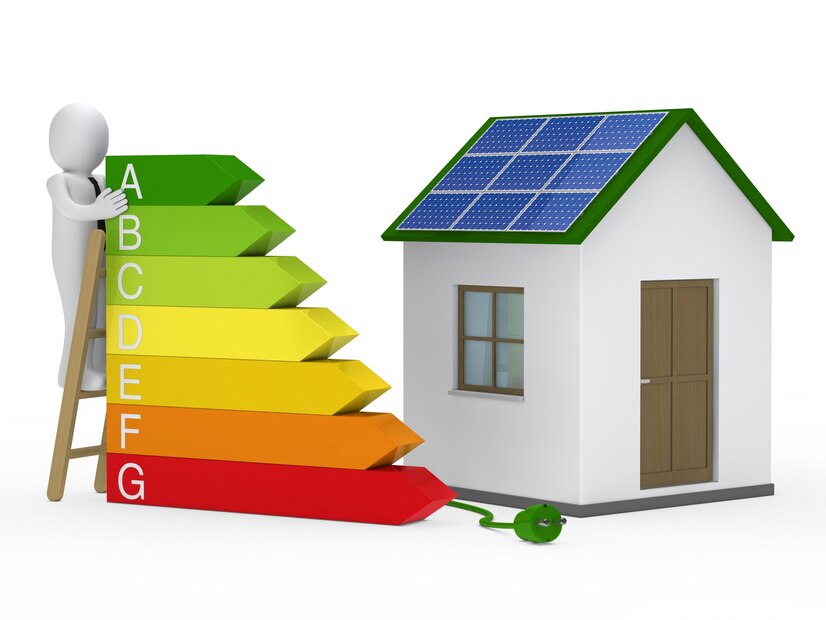
How to make your home more energy efficient
Making your home more energy-efficient is one of the best ways to reduce energy bills, lower your carbon footprint, and create a comfortable living environment. Small upgrades and mindful changes can make a significant difference in how much energy your home consumes. Here are practical and effective ways to boost energy efficiency in your home.
1. Upgrade to energy-efficient appliances
Older appliances often consume more electricity than newer, energy-efficient models. Look for the ENERGY STAR label or similar certifications when replacing items like refrigerators, washing machines, and dishwashers. These appliances are designed to use less energy, saving you money over time. Switching to a more efficient water heater, especially if it’s over a decade old, is another upgrade that can significantly reduce your energy use.
2. Seal windows and doors
Drafty windows and doors let cold air in during winter and cool air escape in summer, forcing your heating and cooling systems to work harder. By sealing gaps with weatherstripping, caulk, or foam sealant, you can prevent energy loss and make your home more comfortable. For older windows, consider upgrading to double or triple-pane glass, which provides better insulation and reduces heat transfer.
3. Insulate your home
Insulation is essential for maintaining a stable indoor temperature. If your home isn’t properly insulated, it’s likely losing heat in winter and gaining it in summer. Consider adding insulation in your attic, walls, and basement. Even insulating pipes and ductwork can help reduce heat loss, making your heating system more efficient. While insulation requires an upfront investment, it pays off by cutting down on energy costs over time.
4. Install a programmable thermostat
A programmable thermostat allows you to set specific temperatures for different times of the day, so your heating and cooling systems run only when necessary. For example, you can lower the temperature while you’re at work or asleep and automatically warm things up when you’re home. Smart thermostats take it a step further by learning your preferences and adjusting temperatures accordingly. They can even be controlled remotely, so you’re always in control of your home’s energy use.
5. Switch to LED lighting
LED light bulbs use significantly less energy than traditional incandescent bulbs and can last up to 25 times longer. By replacing your old bulbs with LEDs, you can reduce energy consumption for lighting by up to 80%. LEDs are available in various colors and brightness levels, so you can customize your lighting without sacrificing style or comfort.
6. Use power strips to prevent standby power
Even when turned off, many electronic devices continue to use a small amount of electricity, known as standby power. This “phantom energy” can add up over time, especially in homes with multiple devices. Plugging electronics into a power strip allows you to easily switch them off completely when not in use. Smart power strips are another great option, as they automatically cut power to devices that are in standby mode.
7. Reduce water heating costs
Water heating is one of the largest energy expenses in most homes. Lowering your water heater’s temperature to 120°F (49°C) can reduce energy use without compromising comfort. Installing low-flow showerheads and faucets also helps, as they use less water, reducing the demand on your water heater. If you’re looking for a more substantial change, consider upgrading to a tankless water heater, which heats water on demand and doesn’t waste energy maintaining a large tank of hot water.
8. Optimize heating and cooling systems
Regular maintenance of heating and cooling systems is crucial for efficiency. Replace air filters regularly to keep systems running smoothly, and have your furnace and air conditioner serviced annually. Installing ceiling fans can also help circulate air more effectively, allowing you to set your thermostat a few degrees higher in summer and lower in winter. If you have rooms that are rarely used, close vents to redirect airflow to areas where it’s needed most.
9. Embrace natural light
Making use of natural light can help reduce your dependence on artificial lighting. During the day, open curtains and blinds to let sunlight fill your space, providing both warmth and illumination. In the summer, use light-colored or reflective curtains to reduce heat gain, keeping your home cooler without cranking up the air conditioning. Skylights and solar tubes are also great options for bringing in natural light to areas that don’t have many windows.
10. Consider renewable energy sources
If you’re ready for a more significant investment in energy efficiency, consider installing solar panels or a small wind turbine on your property. Solar energy is one of the most popular options for homeowners, as it allows you to generate your own electricity and reduce dependence on the grid. While the initial cost can be high, tax incentives and rebates are available in many areas, making renewable energy more accessible. Over time, renewable energy systems can significantly reduce or even eliminate electricity bills.
11. Choose energy-efficient window treatments
Window treatments like blinds, shades, and curtains can enhance energy efficiency by providing insulation and controlling the amount of sunlight entering your home. In the winter, insulated curtains help retain heat, while light-blocking shades can keep rooms cooler in the summer. Motorized blinds and shades are an energy-efficient option that can be programmed to open or close at specific times of the day, allowing you to make the most of natural lighting and insulation.
12. Limit hot water use in laundry
Washing clothes in cold water can save a considerable amount of energy, as it eliminates the need to heat water. Modern detergents are designed to work effectively in cold water, so you won’t sacrifice cleanliness. Additionally, air-drying clothes whenever possible reduces the need for energy-intensive dryers, extending the life of your clothing and further reducing your energy bill.
Creating an energy-efficient home doesn’t require drastic changes; even small steps can have a significant impact. By implementing these simple yet effective strategies, you can reduce energy use, lower utility bills, and contribute to a more sustainable environment. An energy-efficient home not only benefits you financially but also helps protect the planet, making it a worthwhile investment for you and future generations.
